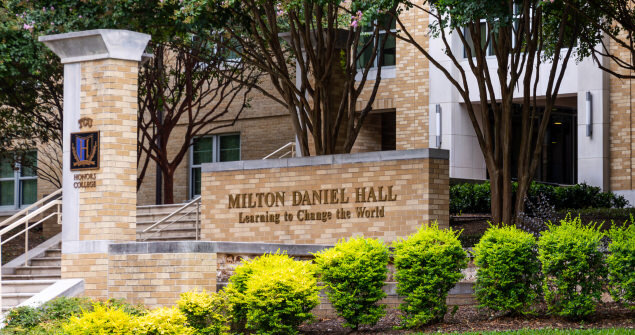Art History
Expand your worldview by understanding art’s critical role in history and culture.

As an art history student, you’ll learn about art in the world-class museums of Fort Worth and Dallas and gain the skills necessary to compete successfully in today’s changing job market. The foundation in liberal arts and humanities that art history provides is essential to becoming a lifelong learner and educated global citizen. Classes promote skills in critical inquiry and the ability to communicate effectively, both orally and in writing. Research and creative projects enhance problem-solving skills.
Contact
- art@tcu.edu
817-257-7643
Programs Offered
Sample Courses
- Art of Mexico from 1500 to Present
- Eighteenth Century Art
- Women and the Visual Arts, 1500-1800
- Contemporary Art
View Courses & Degree Requirements

Core Curriculum
Your success is at our Core. TCU’s Core Curriculum prepares you to live and work in today’s ever-evolving diverse and global society. It encourages you to be intellectually curious and ask big questions about the world and your place in it.
Special Admission Requirements
There are no special admission requirements for undergraduate study. Learn more about the graduate admissions process.
Our Faculty
TCU’s faculty members are active in their fields of expertise, writing articles and books, participating in museum exhibitions, lecturing nationally and internationally and working with museums and galleries on various projects. Small class sizes promote close student-faculty interaction. Students also assist professors with research, conduct independent studies and intern at area museums.
What Sets Us Apart
The art history program at TCU is closely linked to some of the most important museums in the world: the Amon Carter Museum of Art, Kimbell Art Museum, Modern Art Museum of Fort Worth and Sid Richardson Museum — all located a short distance from campus. Classes regularly meet at the museums to examine and discuss specific works of art; often a course will be held at an art museum, rather than on campus, for the entire semester.
Career Prospects
Our art history majors land jobs as teachers and professors, researchers, executive directors, museum/gallery administrators, art writers, gallery owners and curators, while others use the skills learned in their art history courses in a variety of careers outside the arts, such as law and public relations. From major museums to leading galleries and graduate programs, our graduates thrive at institutions such as:
- National Museum of Women in the Arts, Washington, D.C.
- National Gallery of Art, Washington, D.C.
- Smithsonian American Art Museum, Washington, D.C.
- Christie’s, New York
- Modern Art Museum of Fort Worth
- Norwood Gallery, Austin
- Savannah College of Art and Design
Related Academic Programs

John V. Roach Honors College
Exceed your own expectations. Incoming and current undergraduate students of every major may apply. Unique classes are offered which connects students with a varied curriculum that is stimulating, supportive and cross-disciplinary.